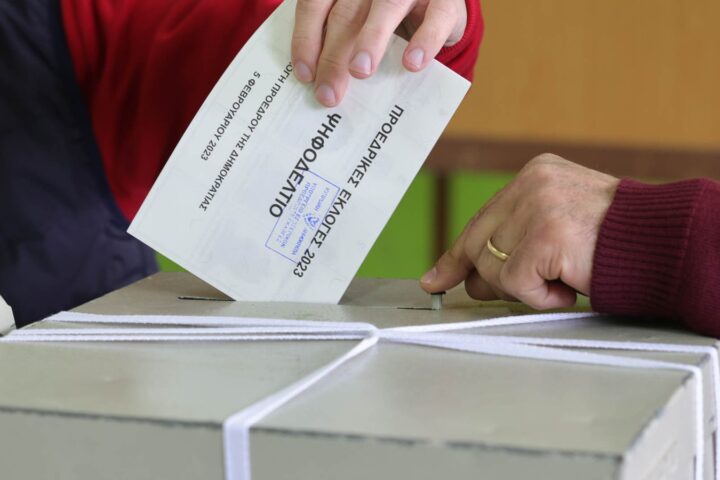A swathe of bank rescue deals took shape around Europe on Monday and fear gripped financial markets before a U.S. lawmaker vote to push through a $700 billion fund to deal with toxic debt.
Investors hung on every twist and turn in Washington as central banks in Asia and Europe pumped cash into the system to try to persuade fearful financiers to lend to each other.
The governments of Belgium, the Netherlands and Luxembourg moved to part-nationalise Belgian-Dutch group Fortis with an injection of over $16 billion. German lender Hypo Real Estate secured a credit line from the German government and banks of up to 35 billion euros.
British mortgage lender Bradford & Bingley was brought under the government's wing. Shares in French bank Dexia tumbled on a report it might need emergency capital, and bank rescue deals emerged in Iceland, Russia and Denmark too.
U.S. stock futures pointed to a drop at the opening bell on Wall Street, and Europe's FTSEurofirst fell more than 3 percent with bank stocks among the heaviest fallers. Investors remained sceptical of the U.S. efforts to stave off the crisis sparked last year by defaults on home loans.
"A rescue plan worth $700 billion is simply not enough to overcome the crisis for the foreseeable future. If anything, all the real economy problems will escalate as a result in the foreseeable future," said Carsten Klude, strategist at MM Warburg.
The dollar climbed, mainly due to the euro and pound sliding about 1 percent, as the toll on financial firms spread in Europe and stirred expectations that central banks may have to respond by cutting interest rates.
Money markets remained frozen with banks refusing to lend to each other for all but the shortest periods.
In the United States, House Republicans were the main obstacle to passage of the bailout bill as they balked at spending so much public money just before elections in November.
But senior Republican Sen. Judd Gregg of New Hampshire threw his weight behind the deal, saying he expected the House to vote on the bill on Monday.
Senate Majority Leader Harry Reid said the Senate could take up the bill by Wednesday.
U.S. Treasury Secretary Henry Paulson said he was confident the programme will be enough to unclog jammed financial markets.
Congressional leaders from both parties said they had a tentative agreement on Sunday on a plan that would use taxpayer funds to buy up bad mortgage debt, would restore confidence.
In the Fortis rescue, the governments of Belgium, the Netherlands and Luxembourg agreed to inject 11.2 billion euros ($16.4 billion) into the banking and insurance company, which has 85,000 staff worldwide.
Fortis will sell the parts of Dutch bank ABN AMRO it bought last year to Dutch rival ING in a deal expected to be finalised within two weeks, sources familiar with the discussions told Reuters.
The U.S. banking system also faced more upheaval. Wachovia Corp is in talks with rivals to be taken over, sources familiar with the situation said on Sunday.
QUALIFIED BIPARTISAN SUPPORT
U.S. congressional leaders from both parties emerged early on Sunday with a tentative agreement that altered key parts of a Wall Street bailout programme initially proposed by the Bush administration.
Both U.S. presidential candidates, Republican John McCain and Democrat Barack Obama, offered qualified support for the bailout proposal, an issue that threatens to overshadow their campaigns with less than six weeks until the election.
With many Americans struggling to save their homes from foreclosure, lawmakers were bracing for a grassroots backlash against a bailout for Wall Street banks, which contributed to the U.S. housing bubble with reckless lending.
In the final hours of talks, Democrats and Republicans rushed to add safeguards for taxpayers and provisions that would allow the government to recover funds if house prices recover and its holdings of bad debt gain value.)
The proposed legislation would disburse the $700 billion in stages. The first $250 billion would be issued when the legislation is enacted, while another $100 billion could be spent if the president decided it was needed. The remaining $350 billion would be subject to congressional review.
Institutions selling assets under the plan would issue stock warrants to the government, a step intended to give taxpayers a chance to profit if markets recover.
The plan would also let the government buy troubled assets from pension plans, local governments and small banks.
In response to a clamour for limits on executive pay, no executives at participating firms would get multimillion-dollar severance packages known as golden parachutes.
A board of top officials, including the Federal Reserve chairman, would supervise the programme. Its management would also be under the scrutiny of Congress's investigative arm and an independent inspector general.
The government could also use its power as the owner of mortgages and mortgage-backed securities to help more struggling homeowners modify the terms of their home loans.
"Passage of the plan is just step one. Step two is execution, and there remains considerable uncertainty about how assets will be purchased," said Michael Pond, a bond strategist with Barclays Capital in New York.







